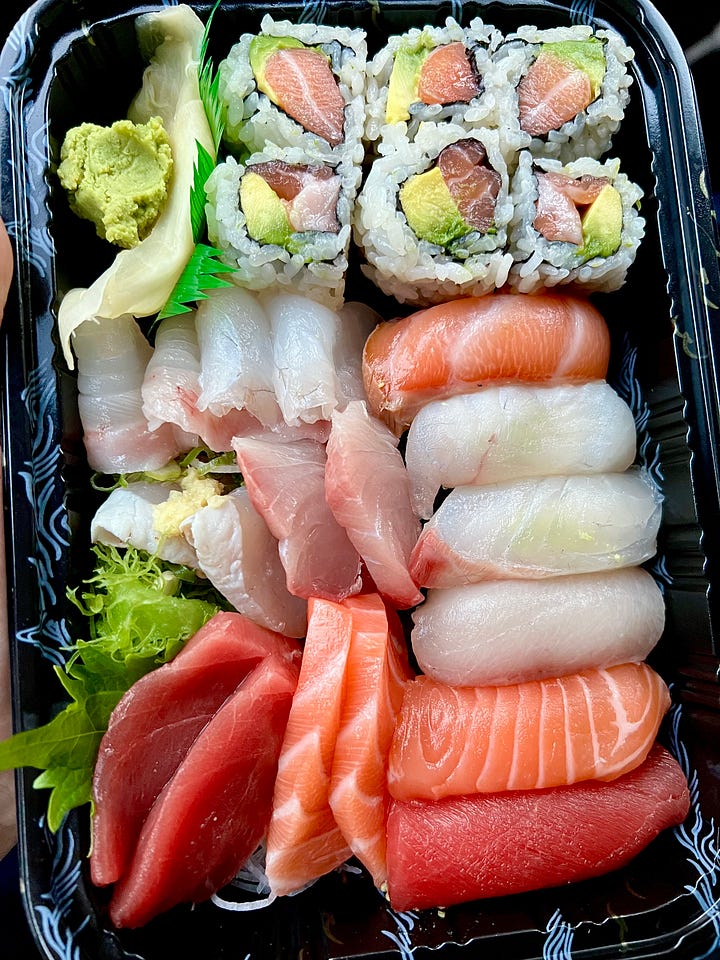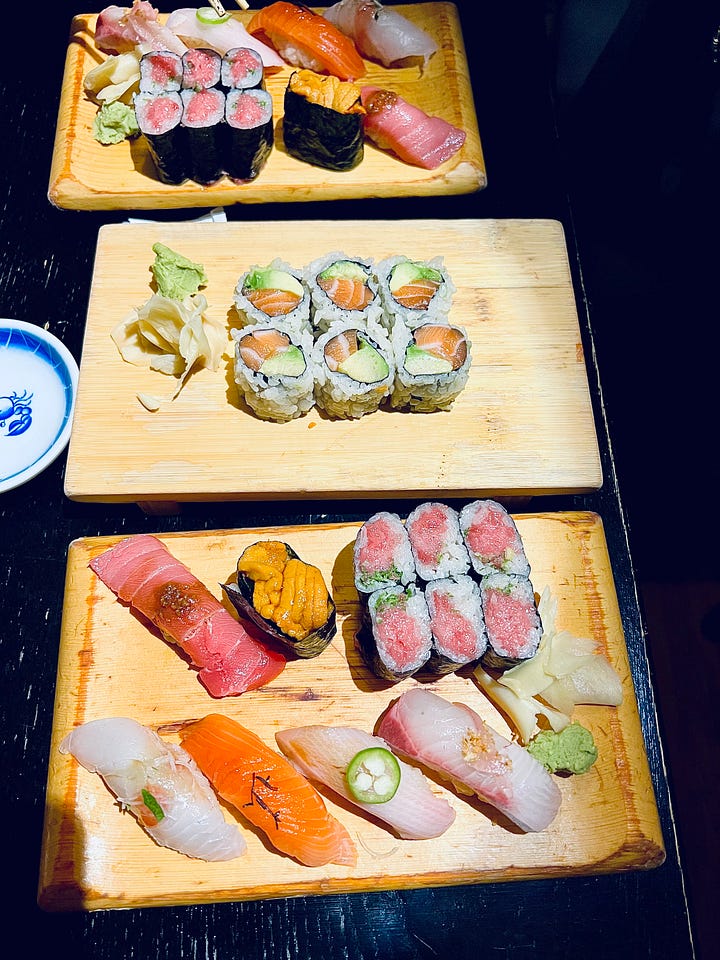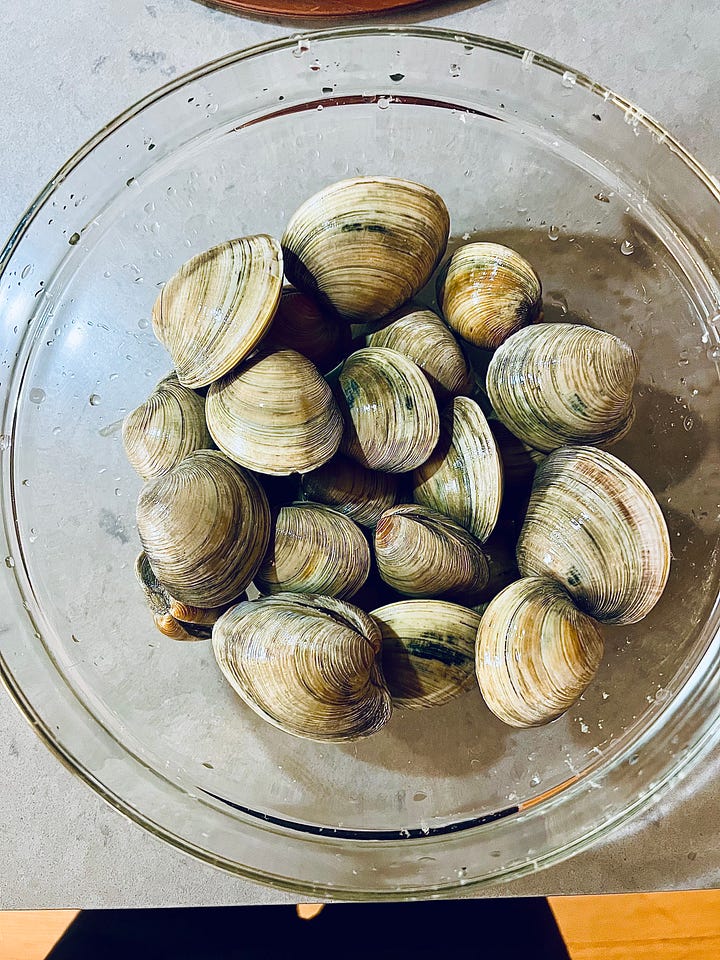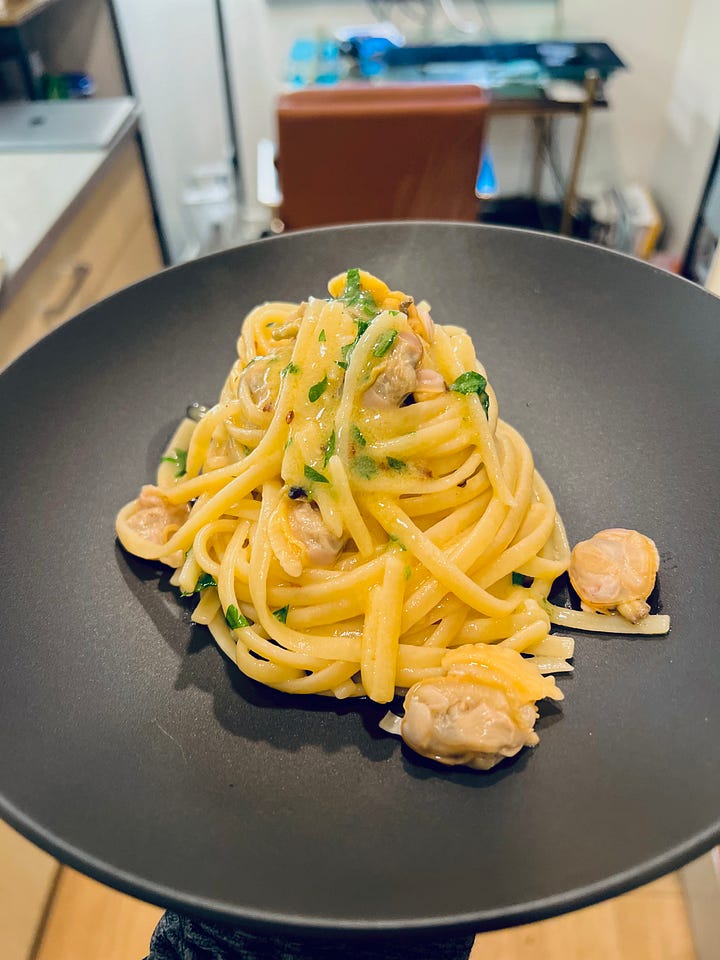🗽 What I’m Ordering
Every New Yorker needs a neighborhood sushi spot. Doesn’t have to be fancy — just for the nights when ordering a few rolls sounds better than cooking. As an Upper West Sider (which still sounds weird to this longtime Upper East Sider), I’m lucky to be within delivery range of the best such local haunt, Sushi Yasaka.
🔪 What I’m Cooking
A favorite of Becky’s and my dad’s, linguine alle vongole (linguine with clams) feels like summer to me, and my version is yet another great example of some themes from previous posts (seafood & citrus; emulsified sauces). Steam some clams, sauté some garlic, and finish the pasta in a potion of leftover clam juice, pasta water, butter, and lemon. It’ll taste like you’re at a beachside shanty.
✔️ Tip of the Week
One of pasta’s magical qualities is it absorbs the flavor of whatever it’s cooked in. For that reason, it’s critical that you season your boiling water (with salt) before dumping the pasta in. Chefs will tell you to salt the water until it tastes like the ocean, and while that may be slight overkill, your pasta will taste a whole lot less bland if you season its water like you would any other food.
👇 More Details Below
My go-to menu picks from Sushi Yasaka
My full linguine alle vongole recipe
Restaurant secrets to get your sauce glossy and sticking to your pasta
Sushi Yasaka


On a sushi restaurant graph where the x-axis is affordability and the y-axis is quality, Yasaka sits comfortably in the top-right quadrant. It’s really some of the best bang for your buck among mid-tier sushi restaurants. I have yet to find a better deal than the Miyabi Dinner ($34 for 6 pieces of sushi, 12 pieces of sashimi, and a roll of your choice). Becky and I also like their Agedashi Tofu (the only time you’ll hear about tofu on this Substack) and their Omakase Mini (in-restaurant only), which is a small collection of special pieces. Of course, they also serve up your classic rolls for about $6 a pop, but if you hit the lunch special, you can order any three, plus soup or salad, for $16. Pretty fair prices given the quality!
Linguine alle Vongole


Hailing from the southern Italian coast, this dish is popular in NYC’s Italian restaurants. My version honors the classic while adding some lemon juice for brightness and some butter to help bind the sauce. Here’s my full original recipe:
2 dozen littleneck clams, washed thoroughly
8 oz. linguine
2 tbsp. olive oil
2 cloves garlic, thinly sliced
Red pepper flakes, to taste
3-4 tbsp. cold unsalted butter, cut into chunks
1 lemon
Salt, to taste
2 tbsp. chopped parsley
Serves 2
Bring a pot of heavily salted water to a boil.
In a second (covered) pot, steam clams until they open, roughly 10 minutes. (No need for any liquid in the pot — the clams will release plenty as they cook.) Remove and reserve clam meat from shells and discard shells. Strain and reserve leftover clam juice.
Cook linguine in the boiling water until a few minutes short of al dente. Reserve 1 cup or so of the pasta water.
In a large pan, warm olive oil over medium heat. Add garlic and pepper flakes and cook until garlic is soft and fragrant, about a minute.
Add linguine, 1/2 cup of the reserved clam juice, and 1/2 cup of the reserved pasta water to pan, and cook, gently but continuously tossing linguine.
When linguine is nearly al dente, add clam meat, squeeze in lemon juice, and add butter, one chunk at a time, continuing to toss linguine, until it is cooked al dente and appears glossy. If liquid dries up before linguine is cooked, add more pasta water until finished.
Season with salt, to taste. Stir in parsley and serve.
Notes:
If you have time beforehand, soak the clams in a bowl of cold saltwater for 30 minutes. They will spit up any sand inside their shells.
You don’t have to be so delicate about straining the clam juice in step 2. I simply line a colander with two paper towels, which act as a filter, and place it over a bowl. You just don’t want the sand and grit from the bottom of the pot to end up in your dish.
I cooked my pasta in the boiling water for about 7 of the 9 minutes the package recommends before transferring to the pan with clam juice.
Never Basta Pasta
Pasta’s other magical quality is its starch, and harnessing that starch is how restaurants make sauces that taste luxurious and actually cling to the pasta instead of running off the noodles and onto the plate. Here are three steps for accomplishing restaurant-quality pasta dishes:
Buy high-quality pasta. It’s not much more expensive than cheap pasta, but it will be the difference between a plate of sauced pasta and a plate of pasta and sauce, if you know what I mean. Look for matte/sandpapery/chalky pastas over smooth and shiny ones. Look for golden, yellow pastas over pale ones. Look for pasta that makes your water cloudy when you drop it in. Swapping out Barilla for Rummo is a great starting point that won’t cost much more.
Save that pasta water! When you cook pasta, it releases loads of starch, thickening the water. That starchy water acts as a natural emulsifier, meaning it helps fat (butter/oil) and water (broth/clam juice/lemon) mix into a smooth, unified sauce rather than separating into greasy puddles. It’s very similar to last week’s pan sauce technique. When you add your pasta to your sauce, include some pasta water and toss it thoroughly to finish the emulsion.
Finish in the sauce. I think most people have heard to mix in some pasta water, but if you do it at the very end, you end up with watery sauce or overcooked pasta. The secret that binds all these tips together like a beautiful emulsion is to finish cooking your pasta in the sauce + pasta water combo. So pull your pasta a couple minutes before it’s done, add it into your sauce with some starchy water, and let it finish cooking for another minute or two while you toss, toss, toss. My bonus tip is that stirring in a couple pats of butter here is really the icing to this cake. I know that’s unfortunate news for the health-conscious, but you wouldn’t want to eat an un-iced cake, would you?




